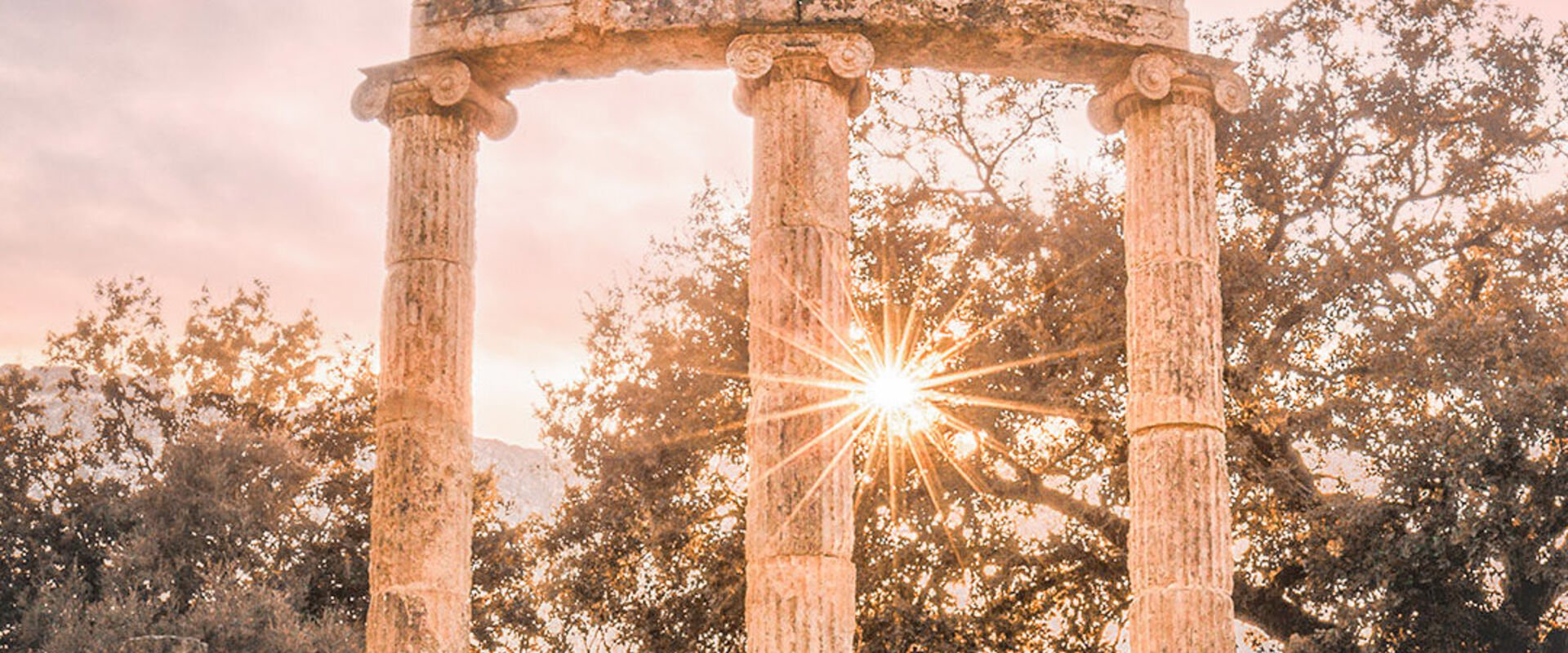Heading out from Athens, you can cherry pick the towns and villages you’d like to include in your itinerary around the Peloponnese. It doesn’t matter which direction you choose, or the length of your trip. Just prepare yourself for a journey of culture, history, nature and fantastic food in an extraordinary corner of Greece. Here’s a 10-day road trip that will whet your appetite for more.
On a journey characterized by time travel, start as you mean to go on. Just 2½ hours from Athens, over the Corinth Canal and down the northeastern shoreline of the Peloponnese, you reach Ancient Epidaurus, the archaeological site that’s done more than any other to bring the ancient world back to life. Welcome to the 4th century BC.
Beginning life as a sanctuary dedicated to the god of medicine, Asclepius, the theatre shows off its striking acoustics each summer by hosting ancient plays and concerts. But it also features the remains of one of the most complete sanctuaries of the ancient world. You’ll walk through the foundations of a hospital that helped transform the treatment of illnesses from divine to scientific methods.
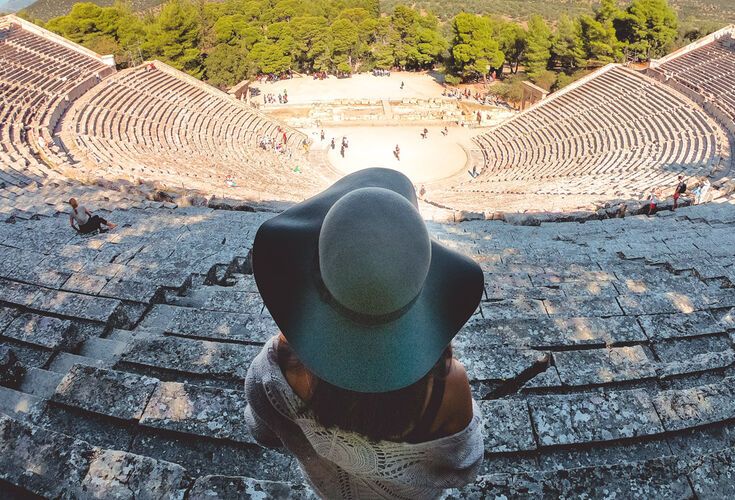
After a full first day, you’ll have worked up quite an appetite. So we’re sending you for some seafood in the picturesque port town of New Epidaurus (as the name translates). But before you do, how about a swim? The water is refreshing and clean.
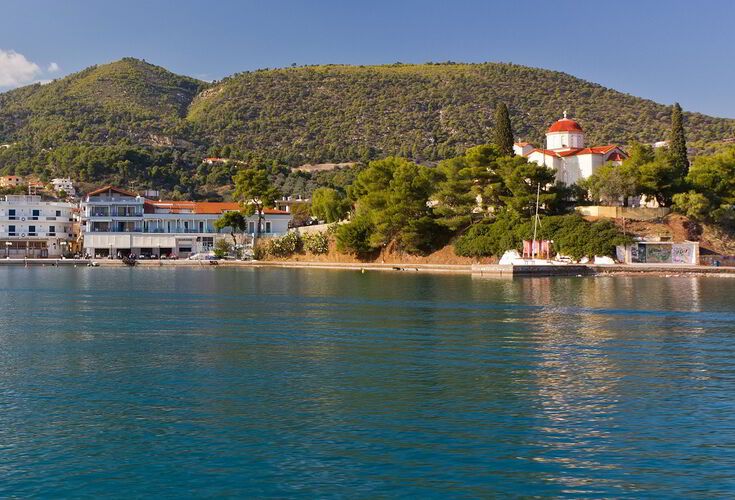
You’re off to Nafplio today. A 40-minute drive will take you to one of Greece’s most romantic towns. The country’s first capital after independence in the early 19th century, it’s also famous for Venetian fortifications and a waterfront promenade. So get ready to do some walking.
Neoclassical buildings, boutique hotels and quaint shops selling local products, Naflpio is a favourite weekend escape of Athenians. It’s the scene of pivotal events in Greek history, housing the country’s first parliament and the church where Othon, Greece’s first king, was crowned. But most of all you’ll love the island feel of the alleyways, the warm colours and inspiring tastes. Top tip: The gelatos are out of this world.
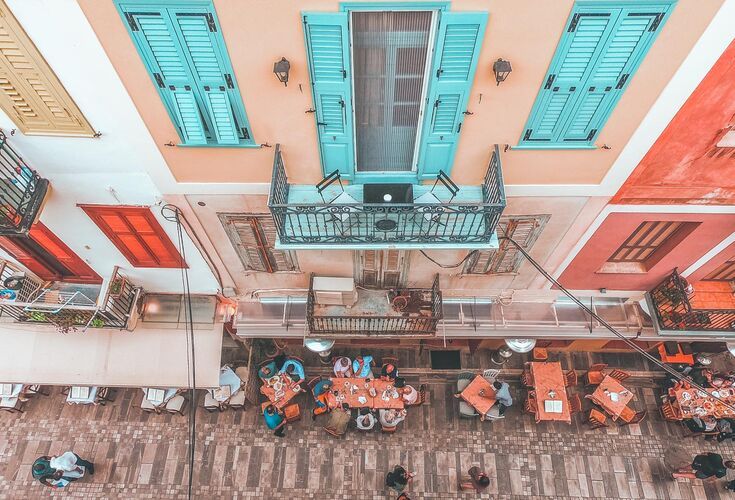
Nafplio was the Venetians’ ‘Naples of the East’ and they certainly left their cultural mark. Nowhere more so than Palamidi Castle, built in the early 18th century, from which you have panoramic views of the town and the Argolic Gulf. You can drive or climb the 999 steps to the top. The fortress was famously stormed in one night by Greek troops in 1822, prompting its Turkish garrison to surrender.
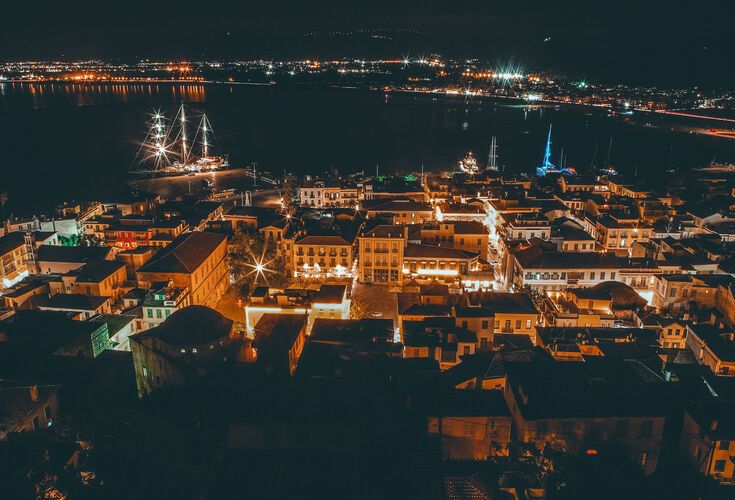
After all that history, it’s time for a leisurely stroll along the promenade. Take your time to amble the 1km to Arvanitias Square. You’ll reach a pretty little chapel (Virgin Mary of the Cave), where you can sit and admire the sea views.
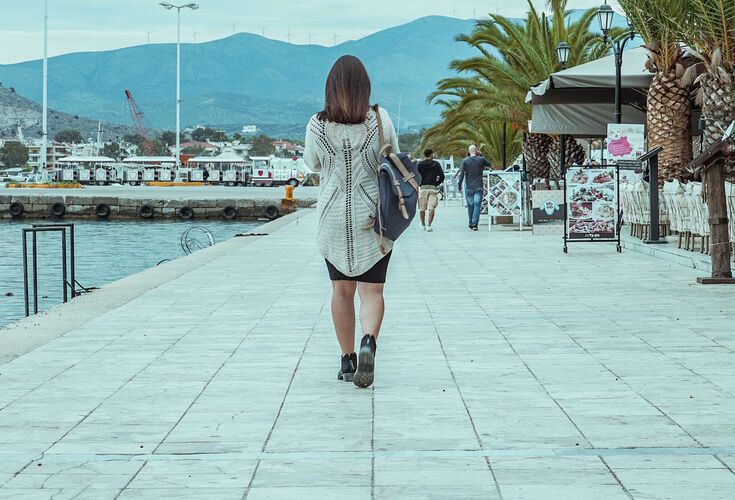
You head deeper into the Peloponnese today, to the iconic castle town of Monemvasia, on the southeastern coast. A medieval citadel, hidden from view from both the mainland and sea, it’s a natural fortress that’s been claimed the Byzantines, Franks, Venetians and Ottomans. The atmosphere is one of cobblestone wonder.
The romanticism and majesty of the Old Town are almost overwhelming. It’s raw yet refined, with a main street and small tavernas, cafes and shops. There’s a fairy tale charm throughout, with striking Byzantine churches and two excellent folklore museums. But mostly this is a place for strolling with wonderful sea views. At twilight, the stones turn lavender, giving the nickname of the Violet City.
As soon as you walk through the gate of the castle, you step into the heart of a medieval citadel. Arched alleyways, quaint homes and crumbling churches are interspersed with cafes, tavernas, shops and artisan workshops. What was once the Byzantines’ central avenue, the Venetians’ market and the Ottomans’ bazaar is now where you’re going to sit for a coffee and take it all in.
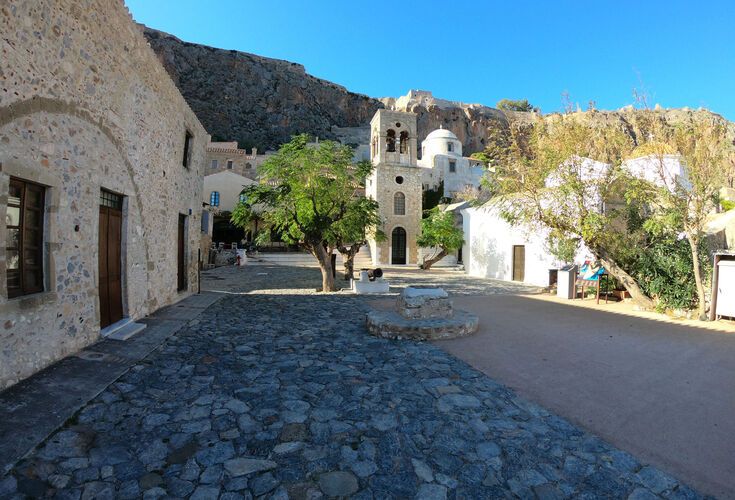
Little shops selling local products are everywhere. If you fancy something sweet, you’ll be drawn by the aromas of the almond-based amygtholata wafting from confectioners’ stores. Or perhaps the samousades, filled with almonds, walnuts and thyme-honey. And for later in the evening, set yourself for cocktails and dinner with views that make you feel like you’re on a balcony overlooking a sea that’s just for you.
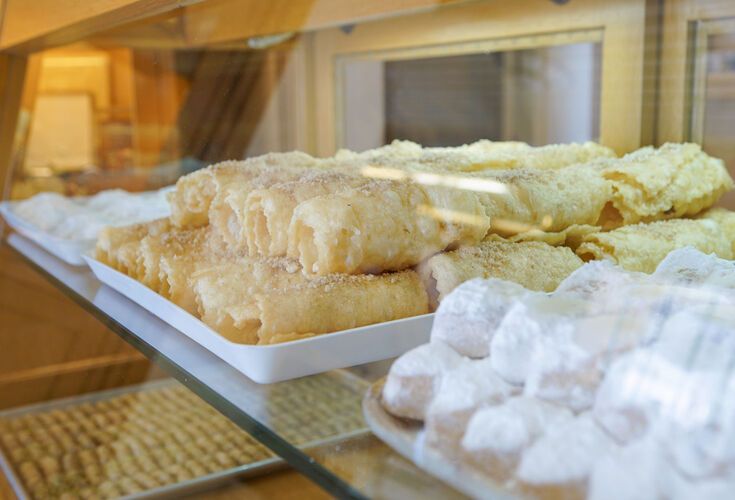
We’re heading west now, to the largest town of the region of Mani. Gythio boasts a picturesque harbour and an array of 19th-century pastel houses that give it a distinctive coastal charm. Whilst you’re here prepare for some excellent seafood meze and a glass or two of ouzo.
You could spend a long time just walking up and down the Gythio waterfront. The little fishing boats and the harbour life of a town that’s built its existence around the sea are the perfect aperitif before settling down to a meal in one of the waterfront’s seafood tavernas.
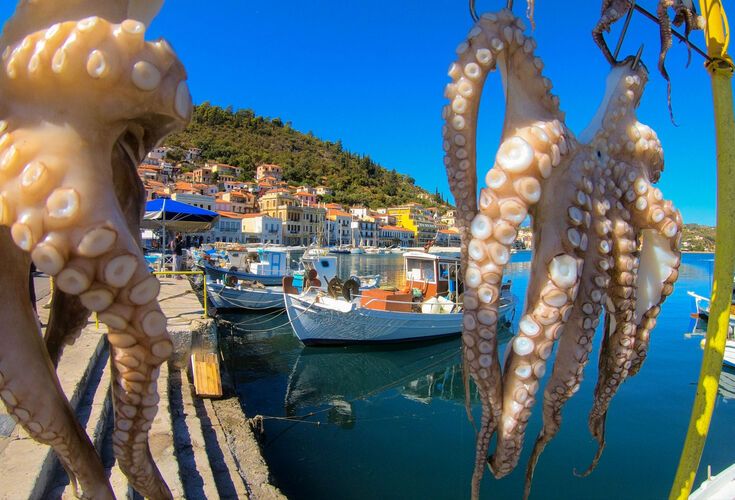
It’s worth stepping into the town to explore the neoclassical buildings and narrow streets. The Old Girls’ School, designed by famed architect Ernst Ziller, is now a museum that will give you an insight into the famously proud people of the Greater Mani region. It also houses manuscripts by the renowned poets Yiannis Ritsos and Nikiforos Vrettakos.
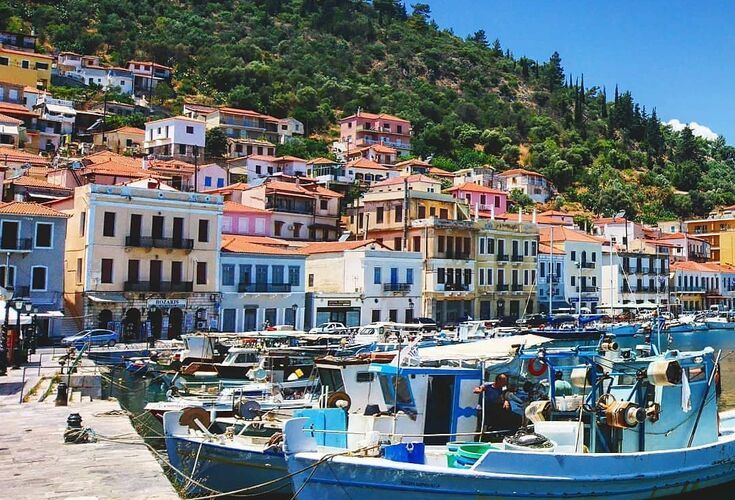
Around 5km north of Gythio you’ll find Selinitsa, a long sandy beach that you can’t miss because there’s a shipwreck sitting on it. It’s an unusual backdrop to an afternoon swim. Or there’s Gythio’s most popular beach, Mavrovouni, with golden sand and excellent water. (It’s also a nesting ground of the endangered caretta-caretta sea turtles.)
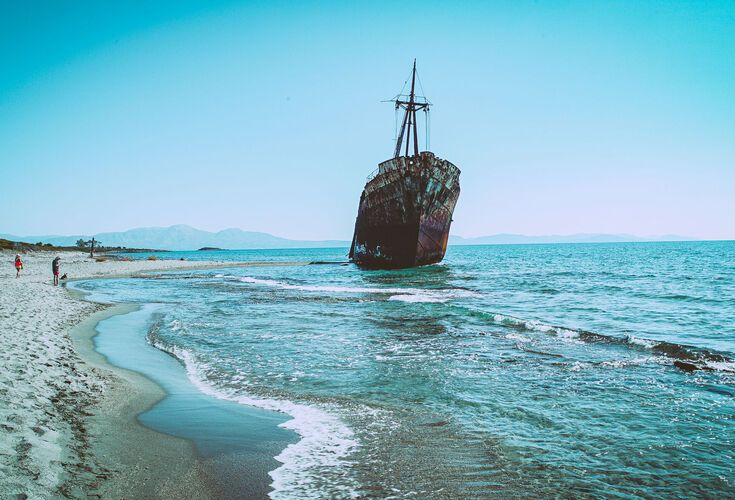
Time to head into Mani – the land of tower house, castles, Byzantine chapels and hard, nuggety locals who smile from their eyes. This is a region of Greece famous for its rugged countryside and equally wild and wonderful history. And its eternally welcoming coastal towns.
The colourful little fishing town of Limeni greets you with tavernas and cafes set along a waterfront that has an amazing way of reflecting the sun, whether at midday or during a golden sunset. It’s also the ideal place for a swim… right from the waterfront.
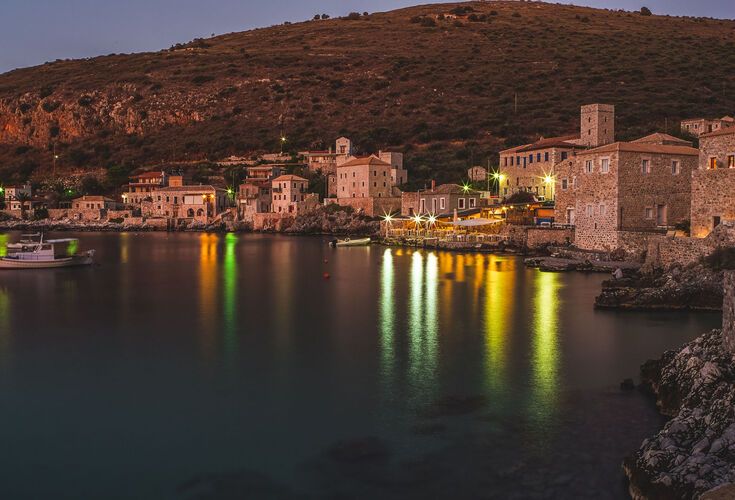
On to the impressively preserved historical town of Areopoli, with its tower houses and stone paths. This is the historic heart of Mani, in which stands the tower of the Mavromichalis family (among the leaders of Greece’s 1822 War of Independence). There’s something timelessly welcoming about Areopoli: all those coffee shops with bougainvillea, the heart-melting bakery smells and the warmth of the locals.
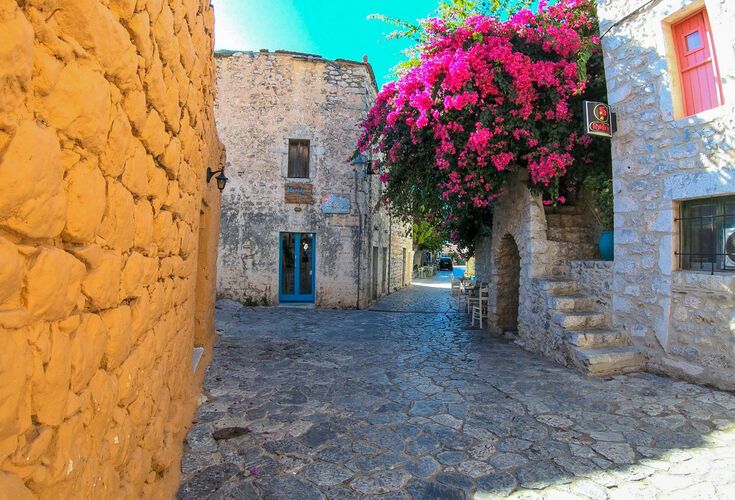
A vast underground cavern stretching 15km into the rock, the Diros Caves not only contain a seemingly endless network of inland waterways but were also one of Europe’s most important Neolithic burial sites. A 40-minute boat tour into Vlychada, the biggest cave of the complex, will take you 2.5km inland, past incredible stalactites and stalagmites and otherworldly formations.
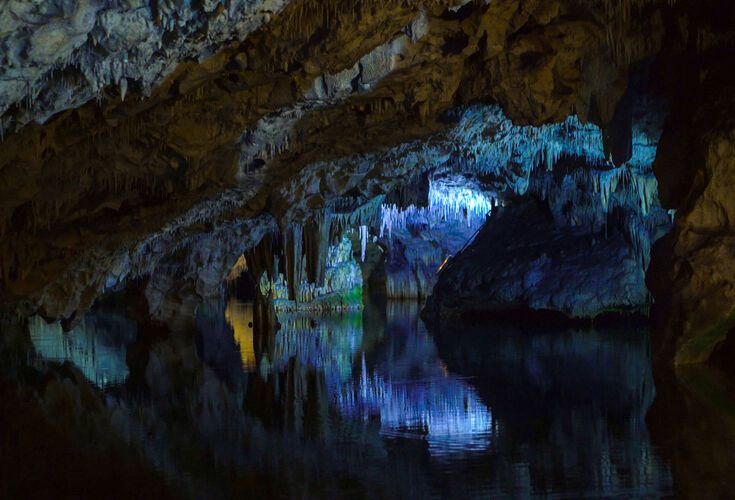
The old fortress town of Kardamyli is also one of Mani’s prettiest settlements and offers the perfect place to refuel. On one side are the calming waters of the Gulf of Messinia and, on the other, Mt Taygetos, standing tall and proud as a Maniot town house.
Kardamyli’s principal beach, Ritsa, extends down the main road, offering a great setting in which to relax. The long pebbly beach has shade and numerous tavernas and hotels, with everything you need on your doorstep. The water’s clear and deep, so enjoy the swim. You’ve earned it.
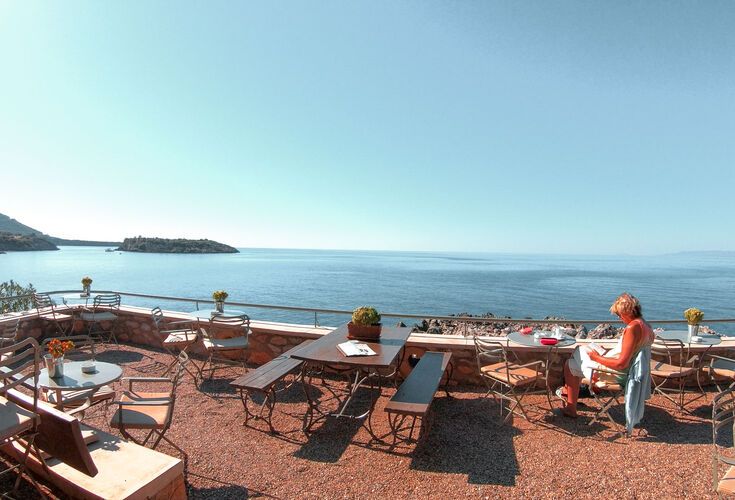
To fully feel the charms of life in Kardamyli, there’s one more thing you need to do. Eat in the shade of the area’s famous tree-lined streets. There are numerous options. You’ll see what we mean.
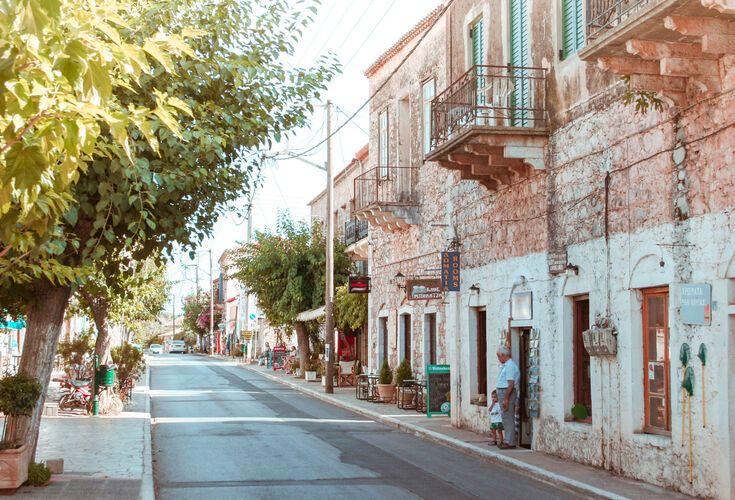
A short hop northbound brings you to Kalamata, the capital of the region of Messinia. There’s an airport (so you could easily stop or even start your road trip here) and a great collection of hotels and cafes and restaurants that attract a younger crowd. Combining classic seaside charm with a great vibe right through the year, the energy is infections.
Start with a stroll along the waterfront, just taking it all in. It’s bound to open your appetite for a swim. So just 12km down the coast, you’ll find Santova, a sandy beach with a cosmopolitan flair and lively beach bar scene. Or nearby Mikri Mantinea, with its beautiful bays with lush greenery and Blue Flag-awarded beach.
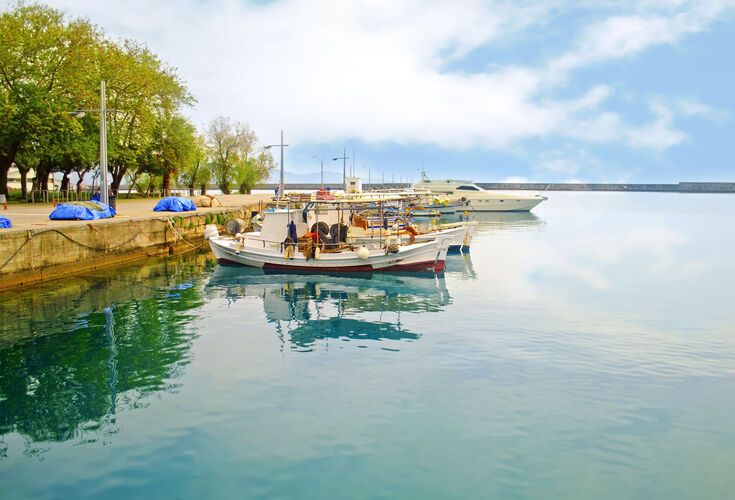
Nothing captures the atmosphere of Kalamata quite like a drive up to Verga, a village in the foothills of Mt Taygetus, where the Gulf of Messinia becomes your very own. Perfect for sundowners or dinner with views of the twinkling lights of Kalamata.
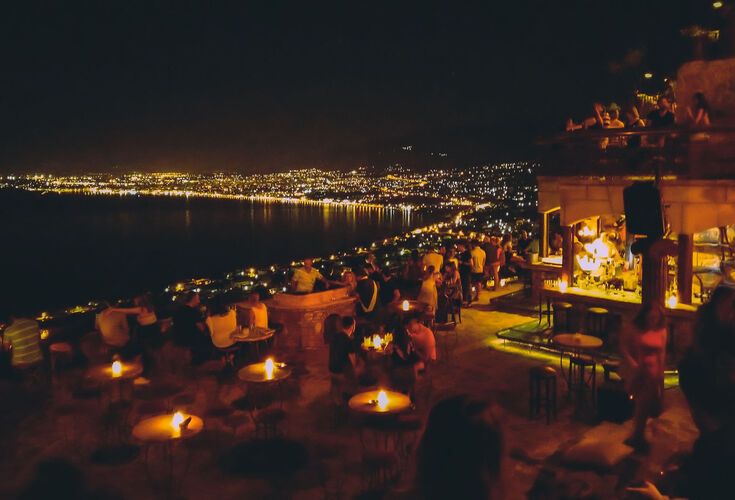
Onwards to two castle towns that were once the prize jewels of the Venetians. Strategically positioned on the southwest peninsula of the Peloponnese, Koroni and Methoni were important stops for merchant ships traveling from the West to the East, as well as for pilgrims heading to the Holy Land.
With its well-preserved old stone homes and sloping streets, there’s an air of southern Italy about Koroni. From the main beach, called Zanga, you have the added bonus of gazing up at the imposing castle, which you’ll enjoy visiting before or after a cooling dip. There’s also a monastery here that’s worth a visit.
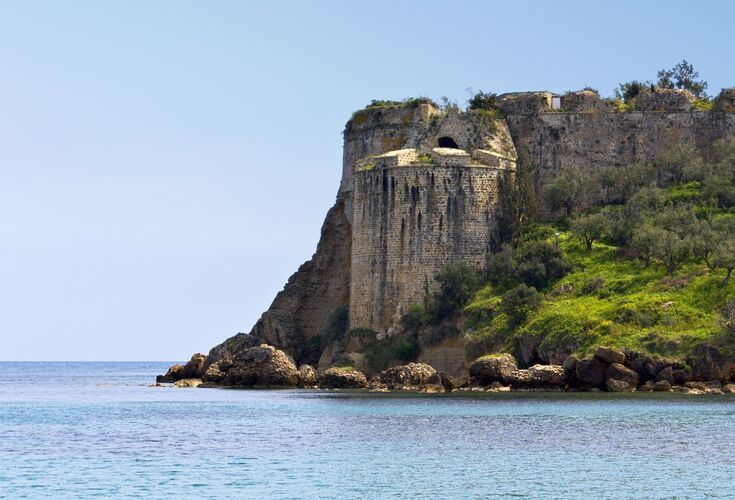
On your way to Methoni, you’ll pass through the welcoming town of Finikounta. The waters here are shallow and the beaches are sandy, making them ideal for families with small children. You can laze on the beach and enjoy a taverna lunch. Take your time. The pace here is slow.
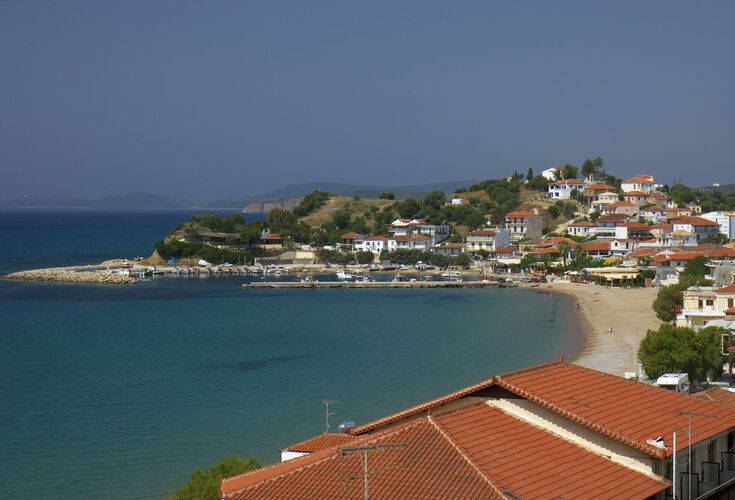
This is a castle experience you’re not going to miss. The 13th century Venetian castle is one of the most important fortresses in Greece and certainly one of the most imposing. Just entering is impressive, with its stone causeway and gates, and there are various important buildings inside, including a church and Ottoman baths.
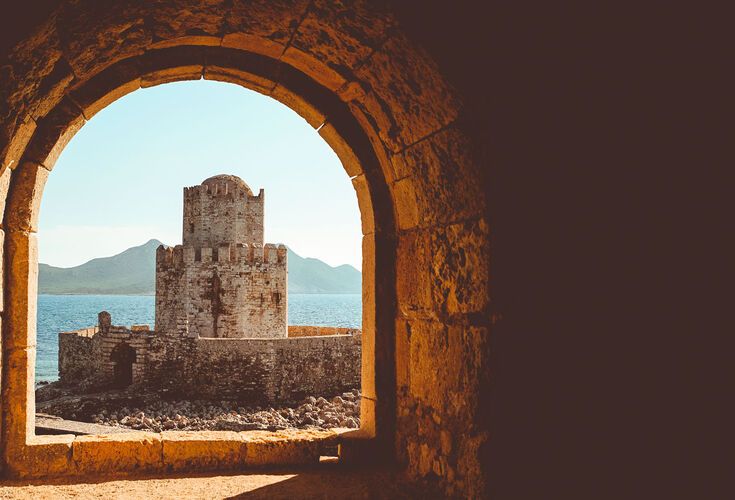
A very short drive north brings you to Pylos, a town whose calm belies a turbulent history. With the largest natural harbour in the Peloponnese, it’s famous for the Battle of Navarino, a decisive naval battle in the liberation against the Turks. It’s also the point of departure for some extraordinary attractions.
Voidokilia is a landmark of the Peloponnese and with good reason. Not only does the horseshoe-shaped beach boast fine white sand but its crushed seashells turn the water an otherworldly turquoise. For the full Instagrammable majesty, climb to Paleokastro Castle. Each year, the beach is part of the Navarino Challenge, a run aimed at raising awareness for the Mediterranean diet.
![]()
Located on a hill west of Pylos, Neokastro is one of the best-preserved castles in Greece, housing a small museum and a mosque converted into a church. Invisible from the sea, it played a key role as a lookout during the Battle of Navarino. It’s also a wonderful vantage point to take in the views of the Gulf of Messinia and beyond.
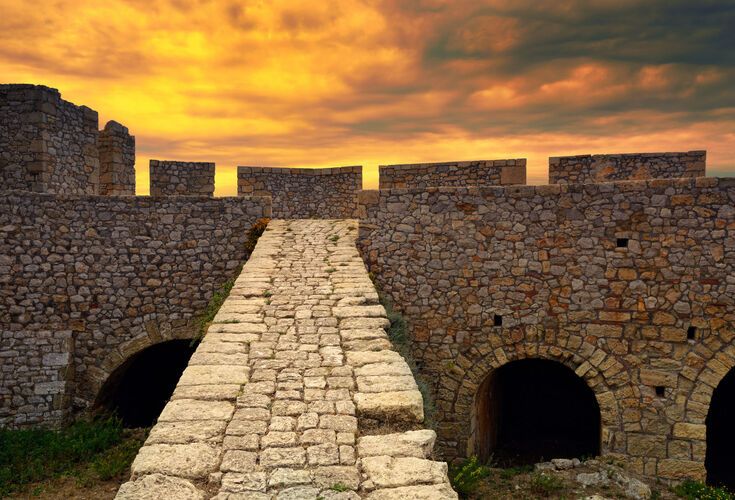
Back we head to Pylos for an evening stroll through the little alleyways of a town that feels like an island hamlet. There are traditional cafes and shops selling local products before reaching the coastal road, where you can settle down to dinner in a seaside taverna.
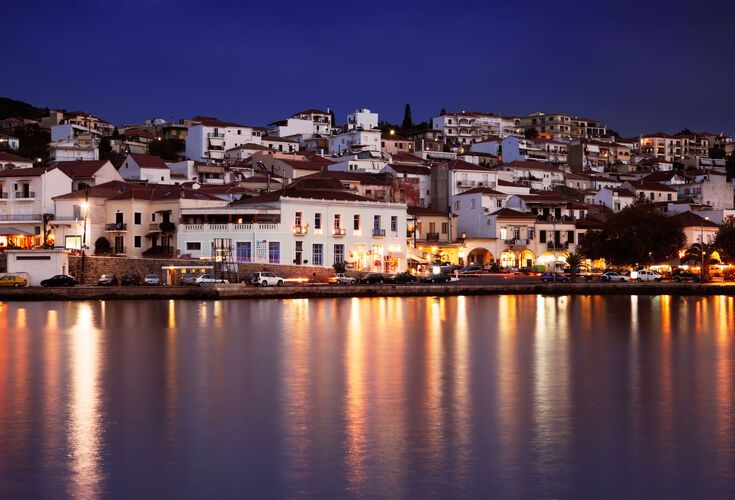
Last – but absolutely not least – comes Ancient Olympia, a name synonymous with one of the great ideals of the modern world. The birthplace of the Olympic Games, this is where the Olympic Flame is lit every four years. It’s also an impressively preserved monument to the original Olympics.
Just by walking through the vaulted entrance of the ancient stadium you can hear the 20,000 fans raucously cheering their heroes. The legacy of the Ancient Olympics, staged here every four years for more than a 1,000 years, is everywhere. A hippodrome for chariot races; a gymnasium and running track; baths and villas; and the 5th-century-BC Doric Temple of Zeus.
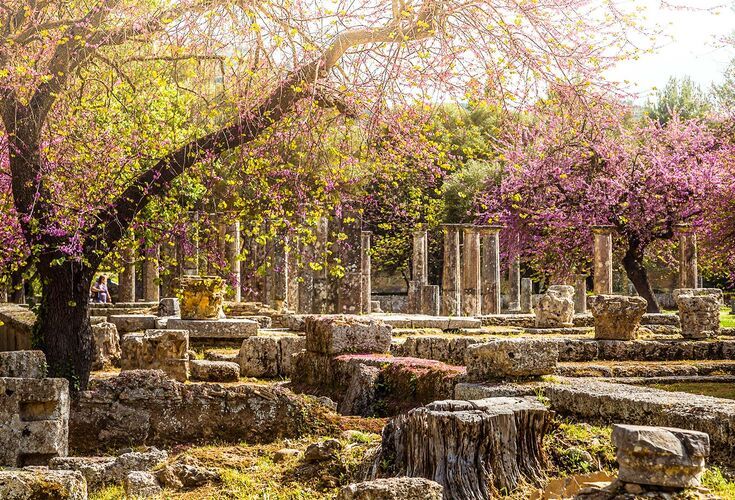
The god Hermes leans gracefully against a tree trunk, cradling the infant Dionysus in his left arm: beauty and grace in perfect harmony. This is the effect of one of the sculptor Praxiteles’ greatest works of art, housed in the Archaeological Museum of Olympia. Do you need much more reason to visit?
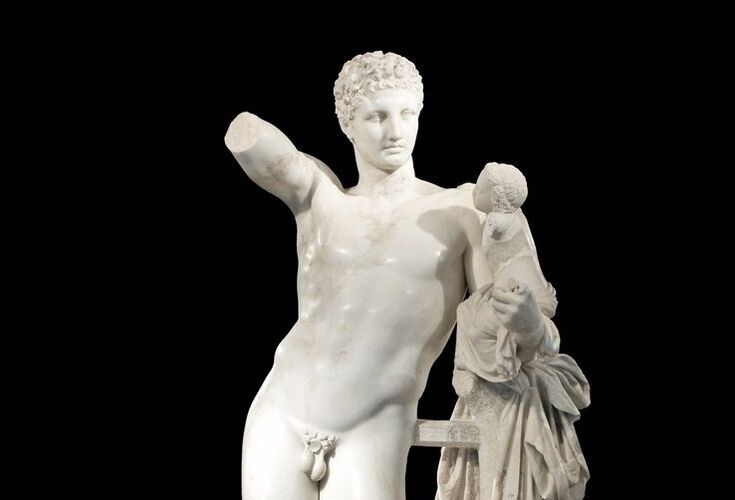
Contact our travel consultants to book this Greekescapes.com vacation today. W
Want to customize this package? Talk to us about what you’d like to change in order to make a vacation that’s perfect for you!
